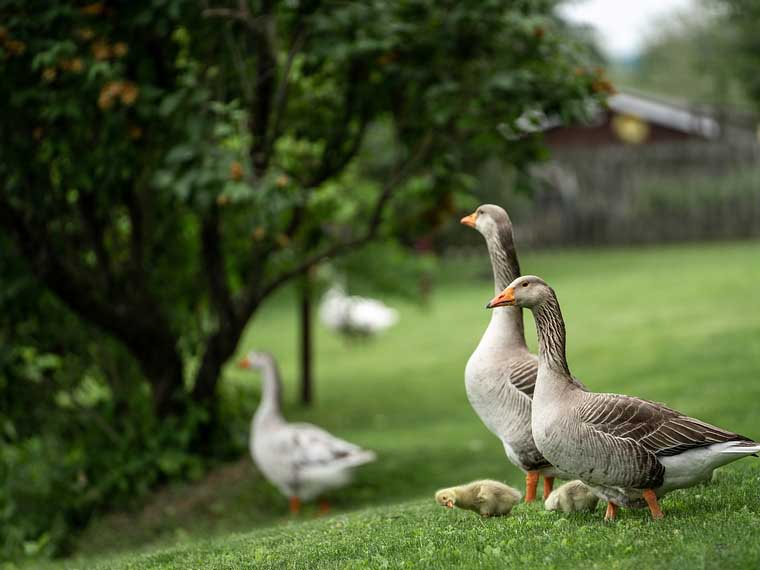Have you ever seen ducks and geese in a huddle on a cold winter’s day, and all standing on one leg? It’s an interesting habit, but one which is grounded in some science and practicality. Today let me explain why you see geese standing on just one leg, and how they evolved this habit.
Why do geese stand on one leg? You will see a goose standing on one leg because it’s trying to conserve heat. The body of a goose is kept warm due to feathers, but their legs don’t have this luxury. To keep their legs warm, they will tuck them up into their warmer bodies, swapping each standing leg equally to conserve the heat.
It sounds so obvious when you think about it. Those long scaly legs are bound to get cold, and not just in the winter or rainy weather. Geese stand on one leg in summer too just to conserve heat and keep the legs warm one at a time.
Here’s some more detail…

What a goose standing on one leg means
Heat conservation is the main reason why geese normally stand on one foot interchangeably. Some people think it happens when geese poop: this is not true.
In cold weather birds usually fare quite well in battling with the cold since their feather-covered upper bodies are usually filled with air pockets that act as insulators.
Their feet, however, as you may have noticed, have no feathers but are instead just covered by scales.
Geese have been a common feature in farmstead life for thousands of years, as well as in the wild. Whether wild or domesticated, geese have evolved to equip themselves with the best chances of surviving in the environment they’re in.
Where material adaptation is not available, feathers in this case for the feet of geese, evolution has equipped geese with enough self-preservation to realise that standing on one leg will be better for them.
As to when exactly geese figured out that standing on one leg would keep their lower body fifty percent warmer, that would be hard to tell even for someone who’s dedicated their life to studying about geese!
Handy Hint: If you do see a goose standing on one leg, do not approach them or invade their space. A goose can attack a human and cause a lot of pain.
Do geese sleep standing up?
No, geese do not sleep standing up. If they did, they would probably end up toppling over. Whilst it might look like a goose is sleeping standing up, it’s probably just where they have tucked the neck and body in to keep warmer.
Geese instead tend to sleep on the water – read more, it’s fascinating.
Why do geese stand on each other?
If you see geese standing on each other, it’s likely that it’s mating season. This is quite possibly some attempt to get into a mating position.
Can a goose live with one leg?
It’s unlikely that a goose would survive in the wild with one leg. It would probably make the goose more susceptible to predators. That’s not to say it’s not possible, it’s just likely going to impact the goose’s ability to fly too.
What are geese prey to?
Naturally, geese are prey to several predators, both for their eggs and their flesh. Raccoons, foxes, skunks, snakes, crows, and foxes are known for preying on geese eggs, especially in wild settings.
Geese make excellent prey for bobcats, hawks, coyotes, and foxes.
What’s the life expectancy for geese?
When reared domestically, geese live impressively long if the conditions are just right for their existence. On average, a domesticated goose in Canada would live for up to twelve years, with swan geese getting up to a whopping twenty years.
Conclusion
Like other things in nature, birds can be quite fascinating when you spend even just a little time observing them. If you’ve spent some time observing geese, then you definitely haven’t missed the sight of geese standing on one foot.
And now you know why geese stand on one leg, make sense doesn’t it?
You might also like…
- Why geese will sometimes hiss at you when you try feeding them
- Why police horses sometimes have their eyes covered in riots
- Here’s how you can feed a baby dove that’s fallen from a nest
- Why you should consider feeding crushed oyster shells to chickens
Image in header via https://pixabay.com/photos/geese-gray-geese-nature-poultry-4287963/

